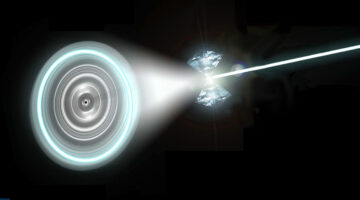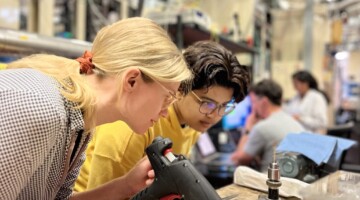Time-resolved, high-throughput, small-angle x-ray scattering improved the screening of small-molecule drug candidates, providing insight into how they stimulate structural transitions in protein targets. The work will speed the discovery of treatments designed to activate biomolecular dynamics associated with desired therapeutic outcomes. Read more »![]()
![]()
ALSNews Vol. 460
June 26, 2024
Superhard Materials at the Nanoscale: Smaller is Better
In the superhard material, rhenium diboride, smaller grain size leads to greater yield strength (i.e., the amount of stress tolerated before permanent deformation). Because such transition-metal borides are extremely hard, metallic, and can be synthesized at ambient pressure, they have exciting potential for use in next-generation cutting tools. Read more »![]()
![]()
Mechanistic Insight into a Viral-Factory Component
Recent protein-structure studies conducted at the ALS provided mechanistic insights into the function of a protein (σNS) involved in viral replication. Understanding these mechanisms will foster the development of therapeutic strategies against viruses that use σNS-like proteins to replicate. Read more »
ALS Computing Group Brings Machine Learning Models to Beamtimes around the World
The ALS computing team is developing tools to help users make the most of their beamtime and eliminate bottlenecks that currently exist. They have been traveling around the world and collaborating across facilities to develop advanced data processing solutions that will yield more meaningful data. Read more »
ALS in the News (June 2024)
-
-
-
-
-
- With x-ray analysis, an asteroid provides a view into our solar system’s past
- Getting up close and personal with…rocks?
- Scientists squeezed infrared light down to 10% of its wavelength. That’s simply incredible.
- Metal alloys that can take the heat
- University of Manchester scientists win prestigious Royal Society of Chemistry Prizes
- Reichel, Shapoval participate in Oakland Unified School District STEM fair
-
-
-
-



